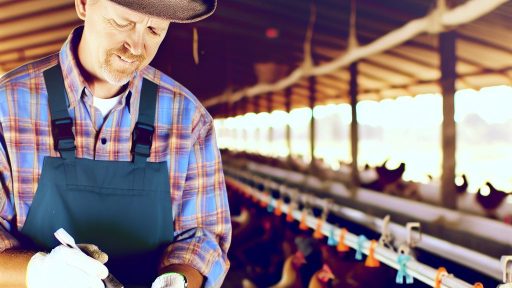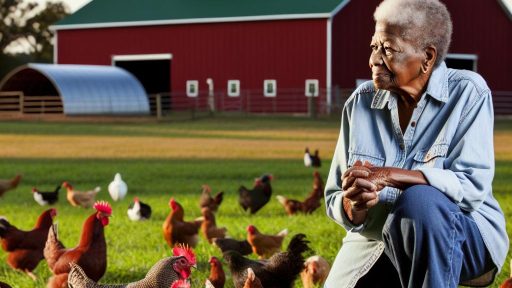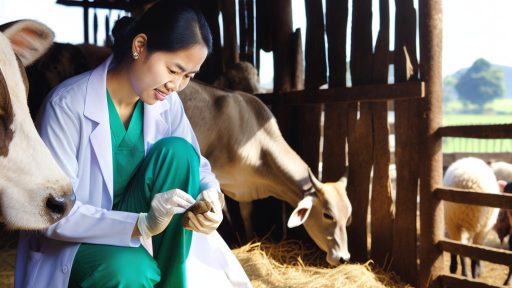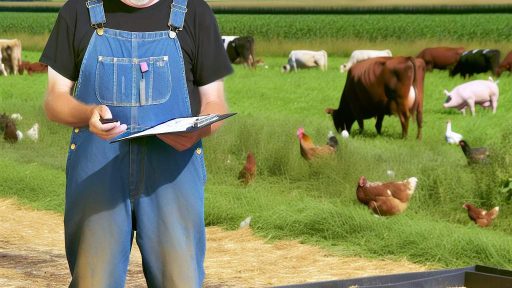Introduction to Queen Bee Breeding
Queen bee breeding plays a crucial role in U.S. agriculture.
This practice directly impacts honey production and pollination efficiency.
Robust colonies ensure healthier ecosystems and improved crop yields.
The demand for honey and pollination services continues to rise.
Consequently, innovative breeding methods become increasingly important.
Significance of Healthy Queen Bees
Healthy queen bees are essential for colony vitality.
They influence worker bee behavior and hive productivity.
Moreover, a strong queen can lay thousands of eggs daily.
This reproductive capacity sustains colony population and health.
Current Challenges in Queen Bee Breeding
Many beekeepers face significant challenges today.
Colony collapse disorder poses a serious threat to beekeeping.
Pests and diseases, such as Varroa mites, further complicate matters.
Additionally, genetic diversity among queens often decreases.
This trend leads to weaker colonies and lower honey production.
Innovative Breeding Techniques
Research on innovative breeding techniques presents exciting solutions.
Transform Your Agribusiness
Unlock your farm's potential with expert advice tailored to your needs. Get actionable steps that drive real results.
Get StartedSelective breeding focuses on naturally resilient traits.
For instance, breeding for disease resistance can enhance survival rates.
Additionally, artificial insemination increases genetic diversity.
New technologies allow for the better selection of queen genetics.
Future of Queen Bee Breeding
The future looks bright for queen bee breeding in agriculture.
As research continues, new methods will emerge.
These methods promise to create stronger, more productive colonies.
Ultimately, improved techniques will benefit both beekeepers and farmers.
Healthy colonies are vital for the sustainability of U.S. agriculture.
Traditional vs. Innovative Breeding Techniques: A Comparative Analysis
Overview of Traditional Breeding Methods
Traditional breeding methods have been used for centuries in beekeeping.
These techniques often focus on selecting the best-performing queens.
Beekeepers analyze traits such as honey production and temperament.
This method relies heavily on natural processes and observation.
It requires a deep understanding of local bee populations.
Challenges of Traditional Methods
One major challenge is the slow advancement in genetic variation.
This process can take several generations to observe results.
Additionally, it may not adapt quickly to environmental changes.
Moreover, disease outbreaks can rapidly deplete bee populations.
Introduction to Innovative Breeding Techniques
Innovative breeding techniques have emerged to address these challenges.
These methods leverage genetic research and technology.
One notable approach is using selective breeding based on genetics.
This can optimize desirable traits more efficiently.
Benefits of Innovative Techniques
Innovative methods provide rapid improvements in bee health.
They enhance resistance to diseases and environmental stressors.
Showcase Your Farming Business
Publish your professional farming services profile on our blog for a one-time fee of $200 and reach a dedicated audience of farmers and agribusiness owners.
Publish Your ProfileThis approach can also improve honey production significantly.
Furthermore, technology allows for better tracking of genetic traits.
Examples of Innovative Breeding in Action
Many beekeepers are adopting advanced genomic techniques.
For instance, DNA analysis helps identify strong genetic lines.
This enables targeted breeding for specific traits like climate adaptability.
Additionally, AI tools can predict breeding outcomes effectively.
Comparative Effectiveness of Techniques
Both traditional and innovative methods have their pros and cons.
Traditional methods excel in local adaptability.
However, they may lack speed in producing resilient bees.
On the other hand, innovative methods enhance adaptability rapidly.
Ultimately, combining both approaches could yield the strongest colonies.
Selective Breeding: Identifying Traits for Health and Productivity
The Importance of Selective Breeding
Selective breeding enhances the health of bee colonies.
It ensures that desirable traits are passed on to future generations.
Beekeepers focus on traits that improve productivity.
Healthy colonies produce more honey and resist diseases effectively.
Identifying Key Traits
Identifying critical traits is crucial for successful breeding.
Some important traits include:
- High honey production
- Resistance to disease
- Gentleness and temperament
- Foraging efficiency
Evaluating these traits helps beekeepers select the best queens.
This process enhances genetic diversity within colonies.
Methods of Evaluation
Various methods assess the traits of potential queen bees.
Behavioral assessments are one effective approach.
Additionally, health screenings ensure that queens are disease-free.
Genetic testing offers insights into desirable traits.
Utilizing these methods provides a comprehensive picture of genetics.
Challenges in Selective Breeding
While selective breeding is beneficial, it presents challenges.
Maintaining genetic diversity is essential.
Overbreeding can lead to vulnerability in colonies.
Furthermore, unexpected traits may arise in the offspring.
Beekeepers must carefully monitor these developments.
Advancements in Technology
Technological advancements improve breeding methods significantly.
DNA sequencing provides detailed genetic information.
Furthermore, data management systems help track colony performance.
These innovations allow for more precise breeding decisions.
As a result, they lead to healthier and more productive colonies.
You Might Also Like: Understanding the Role of Sensors in Precision Livestock Farming
Use of Technology in Queen Bee Breeding
Genetic Selection Tools
Advancements in technology have transformed queen bee breeding practices.
Genetic selection tools play a vital role in this evolution.
These tools allow beekeepers to identify desirable traits more efficiently.
As a result, they enhance the health and productivity of bee colonies.
DNA Sequencing Methods
DNA sequencing has revolutionized genetic assessment in bees.
Showcase Your Farming Business
Publish your professional farming services profile on our blog for a one-time fee of $200 and reach a dedicated audience of farmers and agribusiness owners.
Publish Your ProfileThis method provides insights into genetic variation across populations.
It helps in selecting queens with optimal traits for breeding.
Consequently, beekeepers can develop colonies that are more resistant to diseases.
Marker-Assisted Selection
Marker-assisted selection streamlines the breeding process significantly.
This technique uses specific genetic markers linked to desirable traits.
It ensures a quicker and more accurate selection of superior queens.
By adopting this method, beekeepers enhance colony robustness effectively.
Data Analytics in Breeding Programs
Data analytics plays a crucial role in modern bee breeding programs.
With vast amounts of data, beekeepers can make informed decisions.
They analyze factors like performance, genetics, and environmental impacts.
Furthermore, this approach fosters selective breeding based on data-driven insights.
Impact of Technology on Colony Development
The integration of technology leads to improved colony performance.
Robust colonies are better equipped to thrive in diverse conditions.
Additionally, healthier bees contribute significantly to agricultural productivity.
Ultimately, innovative breeding methods support overall sustainability in agriculture.
See Related Content: Essential Housing Requirements for Comfortable Swine Rearing
Impact of Climate Change on Bee Breeding Strategies
Effects of Temperature Variability
Temperature variability affects bee behavior and physiology significantly.
Higher temperatures can lead to reduced reproductive success.
Conversely, cooler temperatures can slow the development of colonies.
Breeding programs must adapt to these temperature fluctuations.
Changing Forage Availability
Climate change alters the availability of floral resources.
Bees depend on diverse flowers for pollen and nectar.
Reduced availability can impact their nutrition and health.
Breeders should select for bees that thrive in changing conditions.
Increased Incidence of Diseases
Rising temperatures can contribute to the spread of bee diseases.
Pathogens may shift their ranges due to climate change.
This increases the risk of colony losses due to disease outbreaks.
Bee breeding must prioritize disease resistance traits.
Adapting Breeding Strategies
Breeders must monitor climate patterns closely.
They should integrate climate resilience into selection criteria.
Diverse genetic backgrounds can improve colony robustness.
Moreover, collaborating with researchers enhances breeding outcomes.
Utilizing Technology for Breeding
Advanced genetic tools can assist in selecting desirable traits.
Gene editing and genomic analysis provide new opportunities.
These technologies can accelerate the development of resilient bees.
However, ethical considerations are paramount when using these methods.
Delve into the Subject: Ensuring Animal Welfare In Organic Livestock Operations And Management
Nuclei Production: Building Stronger Foundations for Colonies
The Importance of Nuclei
Nuclei play a critical role in bee colony strength.
They provide a robust start for new colonies.
Moreover, nuclei help in increasing the overall population of bees.
Showcase Your Farming Business
Publish your professional farming services profile on our blog for a one-time fee of $200 and reach a dedicated audience of farmers and agribusiness owners.
Publish Your ProfileMethods for Producing Nuclei
Several innovative techniques exist for producing nuclei effectively.
One effective method involves splitting strong colonies.
Beekeepers should ensure that each split has enough resources.
Additionally, supplementing feed can support new nuclei.
Selecting Quality Queens
Choosing the right queen is essential for nuclei success.
Look for queens with traits like high productivity and temperament.
Many beekeepers opt for breeding programs that emphasize these traits.
Environmental Considerations
Proper environmental conditions significantly impact nuclei strength.
Beekeepers must ensure adequate foraging opportunities nearby.
Healthy flowering plants improve bees’ access to food.
Monitoring Nuclei Health
Regular health assessments are key for nuclei sustainability.
Evaluate for signs of disease, pests, or nutritional deficiencies.
Timely interventions can prevent colony losses.
Implications of Nuclei Production
Implementing these innovative nuclei production methods fosters resilient bee populations.
A strong start leads to more productive colonies and improved agricultural outcomes.
Gain More Insights: Optimizing Pasture Rotation For Sustainable Grass-Fed Cattle Feed Efficiency

Role of Bee Health in Breeding Practices
Importance of Bee Health
Bee health plays a crucial role in successful breeding practices.
Healthy bees lead to robust colonies essential for agricultural productivity.
Moreover, strong colonies can better withstand environmental stressors.
Addressing Diseases
Diseases pose significant threats to bee populations nationwide.
Epidemics like Varroa mite infestations can devastate hives rapidly.
Preventive measures in breeding focus on disease resistance.
Breeders often select for traits that enhance immunity.
Additionally, genetic diversity helps bolster hive resilience.
Managing Pests
Pests also negatively impact bee populations.
Common pests include small hive beetles and wax moths.
Effective breeding strategies aim to increase pest resistance.
Utilizing natural predators can supplement pest management approaches.
Innovative Approaches to Breeding
Innovations in bee breeding continue to evolve.
Tools like genetic mapping enhance selection processes.
These tools help pinpoint strong genetic traits among colonies.
Similarly, artificial insemination allows precise breeding choices.
Such practices promote healthier, more resilient bee populations.
Field Trials and Research
Field testing is vital for evaluating breeding outcomes.
Research projects often involve collaboration among universities and beekeepers.
Findings from these trials guide future breeding programs.
Real-world data facilitates the selection of beneficial traits.
Clearly, ongoing research enhances our understanding of bee health.
Community-Based Breeding Programs
Importance of Collaboration
Collaboration among beekeepers strengthens local ecosystems.
This approach encourages knowledge sharing and innovation.
Showcase Your Farming Business
Publish your professional farming services profile on our blog for a one-time fee of $200 and reach a dedicated audience of farmers and agribusiness owners.
Publish Your ProfileBeekeepers collectively address challenges faced by their colonies.
The synergy fosters a supportive community focused on success.
Establishing Breeding Goals
First, participants identify common breeding goals.
These goals should focus on disease resistance and productivity.
Moreover, adaptability to local climate conditions is essential.
Setting shared objectives helps unify efforts across the group.
Sharing Genetics
Beekeepers can pool genetic resources effectively.
This sharing increases genetic diversity within the colonies.
Moreover, it enhances resilience against pests and diseases.
Additionally, exchanging queens among beekeepers promotes favorable traits.
Training and Education
Regular workshops provide essential training for beekeepers.
These sessions cover best practices in bee management and breeding.
Furthermore, they foster a culture of continuous learning.
Ultimately, well-informed beekeepers produce healthier colonies.
Monitoring and Evaluation
Regular monitoring is vital for assessing breeding progress.
Collecting data helps track colony health and productivity.
Moreover, evaluating outcomes informs future breeding decisions.
This disciplined approach ensures continuous improvement in practices.
Building a Support Network
A strong support network enhances community resilience.
Beekeepers support each other through shared resources and advice.
Moreover, connecting with local agricultural agencies can aid in success.
Ultimately, a robust network fosters a thriving beekeeping environment.
Future Trends in Bee Breeding
Advances in Genetics
Genetic advancements shape the future of bee breeding significantly.
Researchers now focus on selecting traits that enhance colony resilience.
They use DNA analysis to identify desirable genetic markers.
This method accelerates breeding programs for healthier bees.
Moreover, it aids in controlling diseases and pests more effectively.
Such precision helps beekeepers maintain robust hives.
Ultimately, it results in greater honey production and pollination services.
Innovative Reproductive Techniques
Innovative reproductive techniques improve queen bee propagation.
Artificial insemination has become a common practice among breeders.
This technique ensures controlled mating with superior drones.
As a result, genetic diversity within colonies increases.
Additionally, in vitro fertilization is being explored for queen bees.
These methods hold promise for rapid colony expansion.
They also allow for targeted breeding to combat specific challenges.
Stress and Resilience in Breeding
Breeding for stress resilience is crucial in current environmental conditions.
Researchers are examining how bees respond to various stressors.
They focus on traits that promote better survival rates.
Furthermore, selecting bees that thrive in specific climates is essential.
Showcase Your Farming Business
Publish your professional farming services profile on our blog for a one-time fee of $200 and reach a dedicated audience of farmers and agribusiness owners.
Publish Your ProfileThis ensures that colonies can withstand diverse agricultural environments.
Enhancing stress resilience leads to more productive colonies overall.
Collaborative Breeding Programs
Collaborative breeding programs across regions enhance genetic diversity.
This approach fosters knowledge sharing among beekeepers and researchers.
By pooling resources, participants can access better breeding stock.
Additionally, collaboration promotes standardized breeding protocols.
This unity strengthens the beekeeping community and its impact on agriculture.
Consequently, robust colonies contribute to sustainable agricultural practices.
Additional Resources
AVMA Guidelines for the Euthanasia of Animals: 2020 Edition*
Integrated Pest Management Control of Varroa destructor (Acari …




